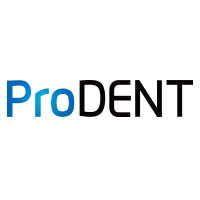What Do You Know About Intraoral Camera? Posted on 25 May 03:35 , 0 comments
Going to the dentist means seeing, hearing about, and experiencing a variety of tools that are unfamiliar to most patients. These odd-looking tools may cause patients some anxiety—we understand that. The intraoral camera, however, is nothing to be nervous about. This tool will cause you no pain, and you may even have fun during your exam! If you haven’t been examined with one and are wondering just what is an intraoral camera, scroll down to learn how it can benefit you.
Intraoral cameras (IOCs) are cameras used by dentists or doctors to show a patient the interior of their mouth, as an alternative to using a mirror. They were first introduced in 1989 and are now widely used in dental offices. IOCs allow the patient to see a clear picture of the inside of their mouth, aiding the dentist in consulting with them on various treatment options. Images can be saved to a patient's file for future reference.
The wand form factor is the industry standard, lightweight, compact, and maneuverable in the patient's mouth.Various design options are also available:
- Wireless or corded with PC-USB, VGA, RCA, or S-Videoconnectivity
- Lightweight (approx, .25 lb / 110g)
- LEDlighting
- Fixed or variable focus mechanisms (Dial and Slide)
- Magnification up to 100X
- Angle of view 0˚ or 90˚
- 45˚ mirror attachment
- Periodontal pocket probe attachment with scale for measurement
- Attachment for single tooth closeups
- Fingertip image capture or foot switches
- SD cardstorage
- Specialized imaging software
The short answer is that an intraoral camera is a tool your dentist uses to examine your mouth in as detailed a way as possible. The instrument, which may look like an oversized pen, has a camera that takes high-resolution footage or images of a patient’s mouth and shows the visuals real-time on a monitor—they’re like high-tech versions of the hand mirrors you see in your dentist’s practice. There’s much more to intraoral cameras, though. These tools are:
Better for the dentist.
Intraoral cameras have incredible technological features. With LED lighting, a head that rotates from 0 to 90 degrees, and powerful magnifying capabilities (some cameras can zoom in up to 100x), your dentist can examine your mouth in extreme detail. This means he or she can make diagnoses more accurately. The office can attach these photos to your health record to make tracking any changes simple. Additionally, because the visuals from the intraoral camera appear on the monitor as they’re taken, your dentist can discuss your oral health with you while you both see the images or footage. Which also means these cameras are . . .
Better for the patient.
Each feature that benefits the dentist also benefits the patient—maybe even more. Your dentist understands symptoms and conditions thoroughly, but it’s often difficult to explain precisely what is happening in a patient’s mouth using just a mouth mirror, which is small and hard to see, or an x-ray image, which takes time to print and doesn’t display images clearly.
When your dentist uses an intraoral camera during your examination, however, you’re seeing exactly what he or she sees right then. Dentists can display clear, colorful images, allowing them to point out any issues and discuss them with you immediately. You’ll certainly learn a lot about your mouth! And the more you see and understand, the more confident you can be when making treatment decisions.
Many offices will print or email images for their patients so you can refer to them at home look for changes yourself. Because these images are processed immediately, it saves you time.
Better for insurance claims.
If you want coverage for a treatment, your insurance provider often needs visual proof of your condition. Just as the high-resolution images show you exactly what’s happening in your mouth, they do the same for your provider, bolstering your treatment case. And again, because print or digital copies are so quickly available with an intraoral camera, it saves time for you, your dentist, and your provider, making your treatment run smoother.
